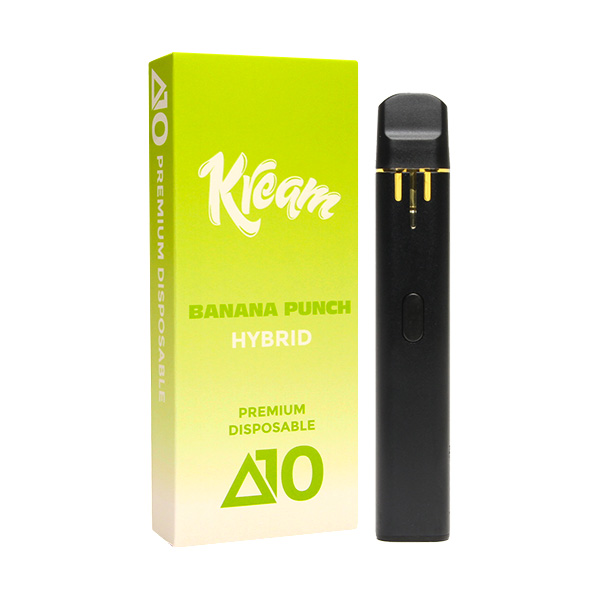Experience Vaping Freedom with Kream Disposable: Your Trusted Choice for Portable Pleasure
Experience Vaping Freedom with Kream Disposable: Your Trusted Choice for Portable Pleasure
Blog Article
Discovering the Environmental Impact of Non Reusable Vape Pens: What You Need to Know
In the world of disposable vape pens, a more detailed assessment of their environmental influence exposes an intricate web of interconnected factors that necessitate our attention. From the manufacturing procedures and materials made use of to their eventual disposal and influence on air high quality, the implications of these relatively practical devices expand far past their immediate usage. Understanding the full extent of their environmental impact is essential for making educated decisions regarding our intake practices and the possible alternatives readily available.
Manufacturing Processes and Products
Disposable vape pens are normally made utilizing a selection of products and processes that can have considerable environmental ramifications. The primary parts of disposable vape pens include a battery, burner, e-liquid tank, and a mouth piece. The battery is often made from lithium, a non-renewable source that calls for significant energy to essence and procedure. The e-liquid reservoir is typically constructed from plastic, including in the environmental concern because of its non-biodegradable nature. The burner, usually made of metal alloys, likewise adds to the ecological influence via the extraction and processing of basic materials.
Moreover, the production procedures entailed in generating non reusable vape pens can better aggravate their ecological impact. Using plastics, metals, and chemicals in the production process results in greenhouse gas emissions, power intake, and waste generation. In addition, the transport of raw materials and completed products includes to the total carbon impact of disposable vape pens. Thinking about these elements, it is important for customers and makers to be mindful of the environmental effects connected with the production and use of non reusable vape pens.
Power Consumption in Manufacturing
During the production process of non reusable vape pens, the energy intake included plays a significant duty in determining their total environmental influence. The production of non reusable vape pens requires power for various phases, including extraction and handling of raw materials, making components like batteries and burner, product packaging, setting up, and transportation. The extraction and handling of materials such as chemicals, steels, and plastics demand considerable power inputs, adding to the overall carbon impact of the item. Additionally, the manufacturing procedures entailed in creating the elaborate elements of vape pens, such as batteries and digital circuitry, count greatly on energy-intensive procedures.
To address the environmental implications of energy intake in manufacturing, manufacturers can adopt more lasting techniques. This can consist of making use of renewable resource resources for producing operations, optimizing production procedures to lower power waste, and carrying out energy-efficient innovations. By prioritizing energy efficiency and sustainability in manufacturing, the ecological effect of disposable vape pens can be minimized, adding to a greener and even more accountable vaping industry.
Disposal and Waste Management

Disposable vape pens have elements such as batteries, electronic circuits, and plastic cases that can be damaging if not taken care of properly (kream disposable). Going Here The lithium-ion batteries in vape pens, for instance, posture a considerable risk if they finish up in garbage dumps, as they can leakage harmful substances right into the soil and water
Reusing programs specifically created for digital waste should be promoted to urge users to recycle their disposable vape pens sensibly. By boosting disposal practices and waste administration approaches, the ecological effect of non reusable vape pens can be considerably lowered.
Influence on Air Quality
The presence of disposable vape pens contributes to the deterioration of air quality in city environments where their usage is common. When people utilize disposable vape pens, they read launch unsafe materials into the air.
Additionally, the disposal of vape pen batteries, which frequently have heavy steels like lithium, nickel, and cobalt, can lead to air contamination if not taken care of appropriately. Incorrect disposal methods, such as incineration or landfilling, can launch these harmful steels right into the air, contributing to air contamination and potentially creating damage to human health.
To minimize the effect of non reusable vape pens on air quality, advertising awareness concerning proper disposal techniques, urging recycling programs for vape pens and batteries, and enlightening users regarding the ecological consequences of these gadgets are essential steps in lowering their environmental footprint.
Alternatives and Lasting Selections
Because of the ecological impact positioned by non reusable vape pens, discovering alternatives and sustainable options is essential for minimizing eco-friendly injury. One sustainable option is to change to refillable original site vape pens that permit customers to recharge the device with e-liquid, considerably minimizing the quantity of waste created. These refillable pens frequently have longer life expectancies, causing fewer tools finishing up in land fills. Additionally, choosing vape pens made from recyclable materials can further reduce the environmental footprint. Producers are progressively using environment-friendly alternatives, such as pens created from recycled steels or eco-friendly plastics.
Additionally, some firms have begun executing take-back programs for made use of vape pens, where they gather and reuse the devices effectively. Motivating liable disposal practices amongst customers can likewise add to alleviating the environmental effect associated with vape pens.
Final Thought
Finally, the environmental effect of non reusable vape pens is significant, with adverse effects on air high quality, power intake in production, and waste administration. It is crucial for consumers to take into consideration the sustainability of their choices and go with choices that have a reduced environmental footprint. By making educated choices and supporting sustainable methods, people can add to reducing the environmental damage triggered by non reusable vape pens.

Reliable disposal and effective waste administration are critical facets to consider when examining the ecological impact of disposable vape pens. By enhancing disposal techniques and waste management techniques, the ecological influence of non reusable vape pens can be significantly decreased.
In final thought, the ecological influence of disposable vape pens is significant, with unfavorable impacts on air top quality, power intake in production, and waste management.
Report this page